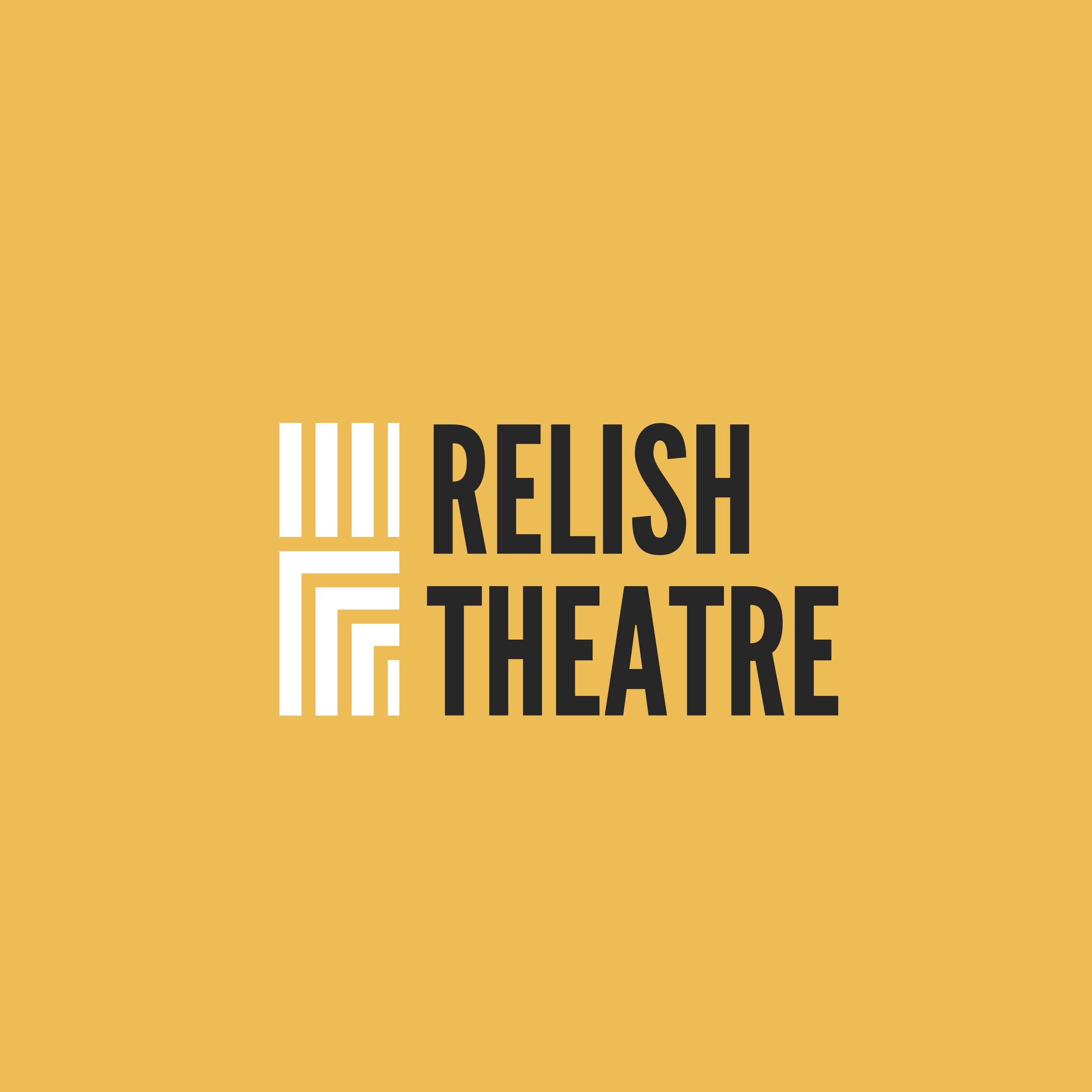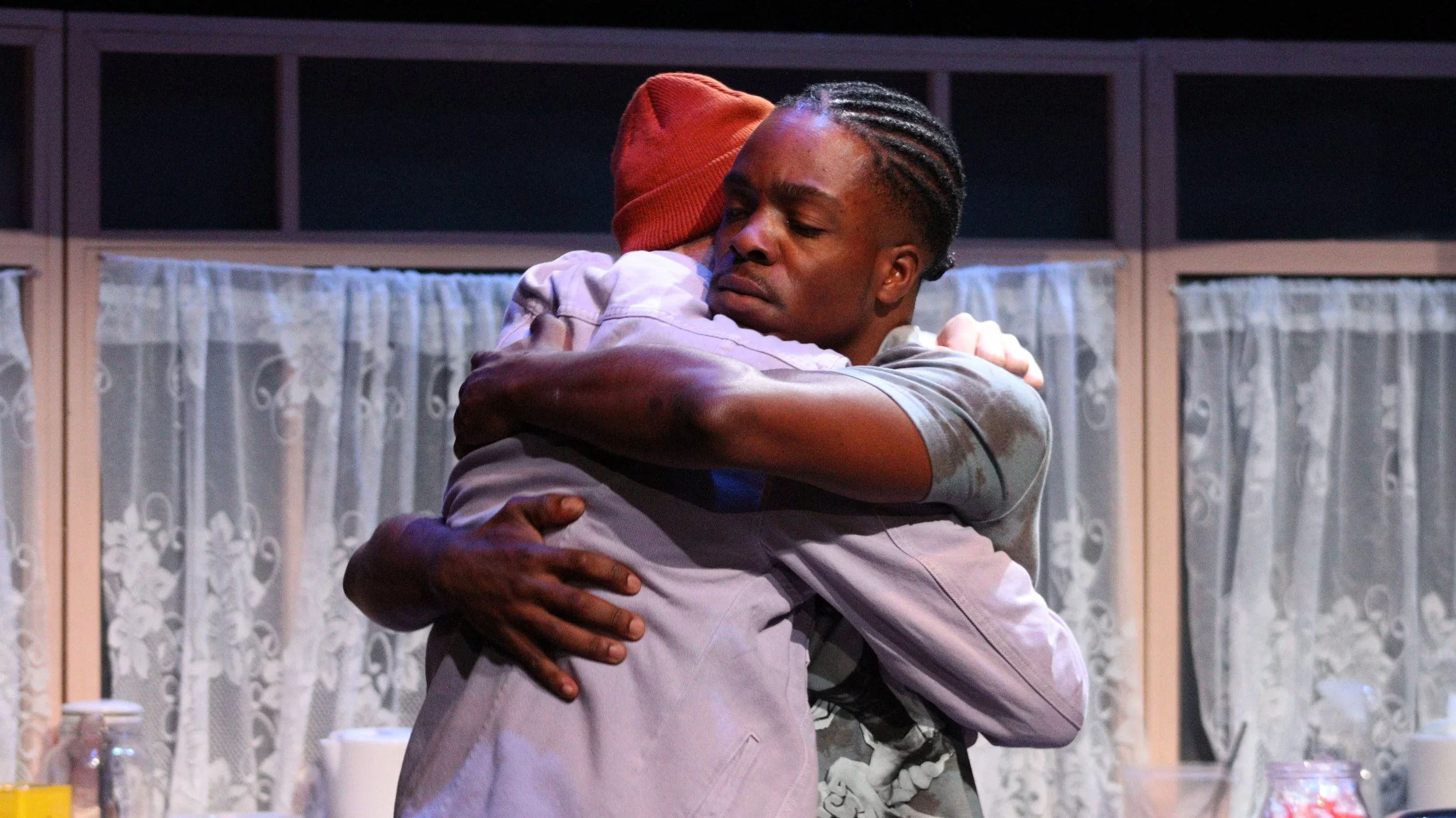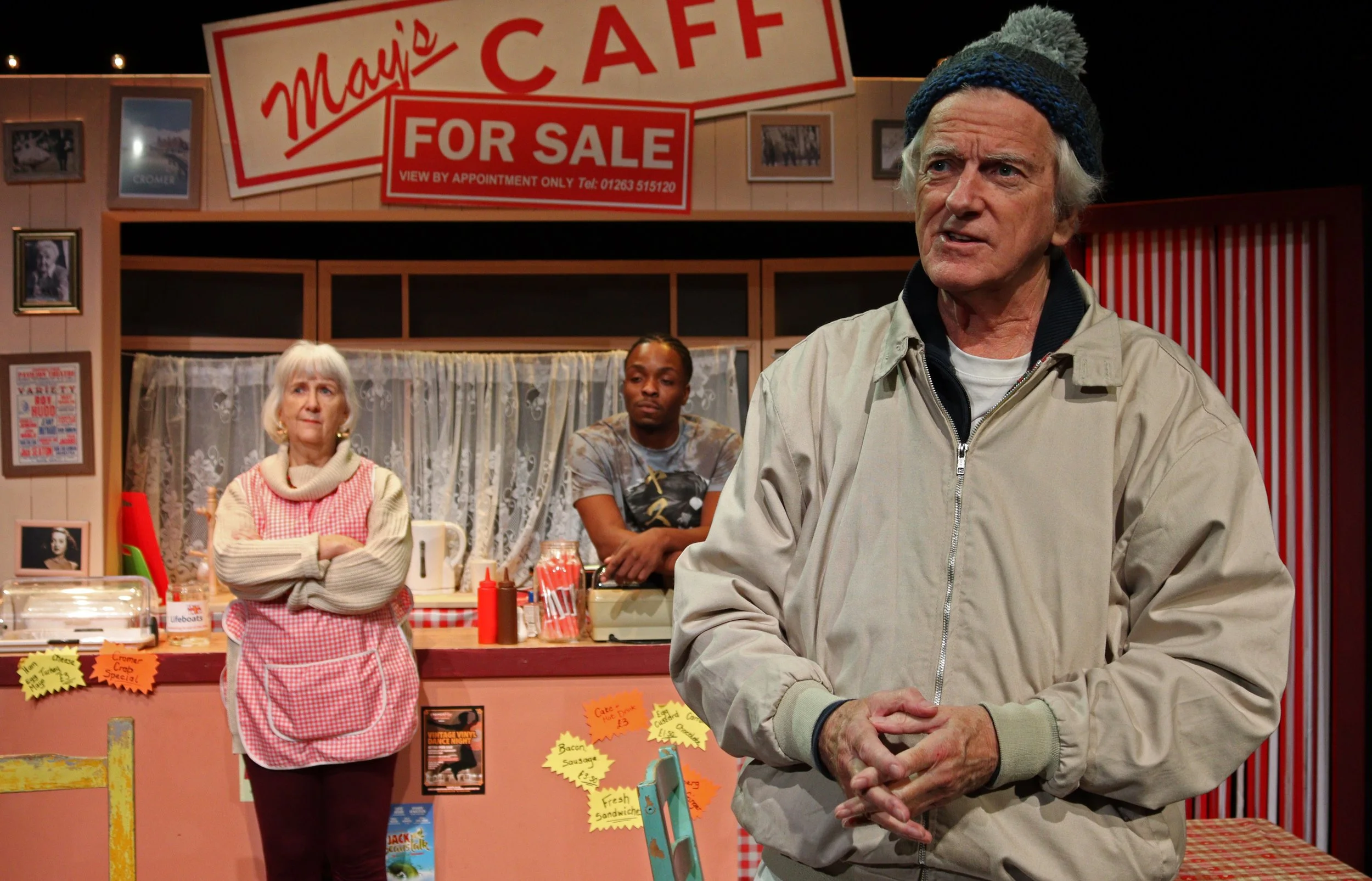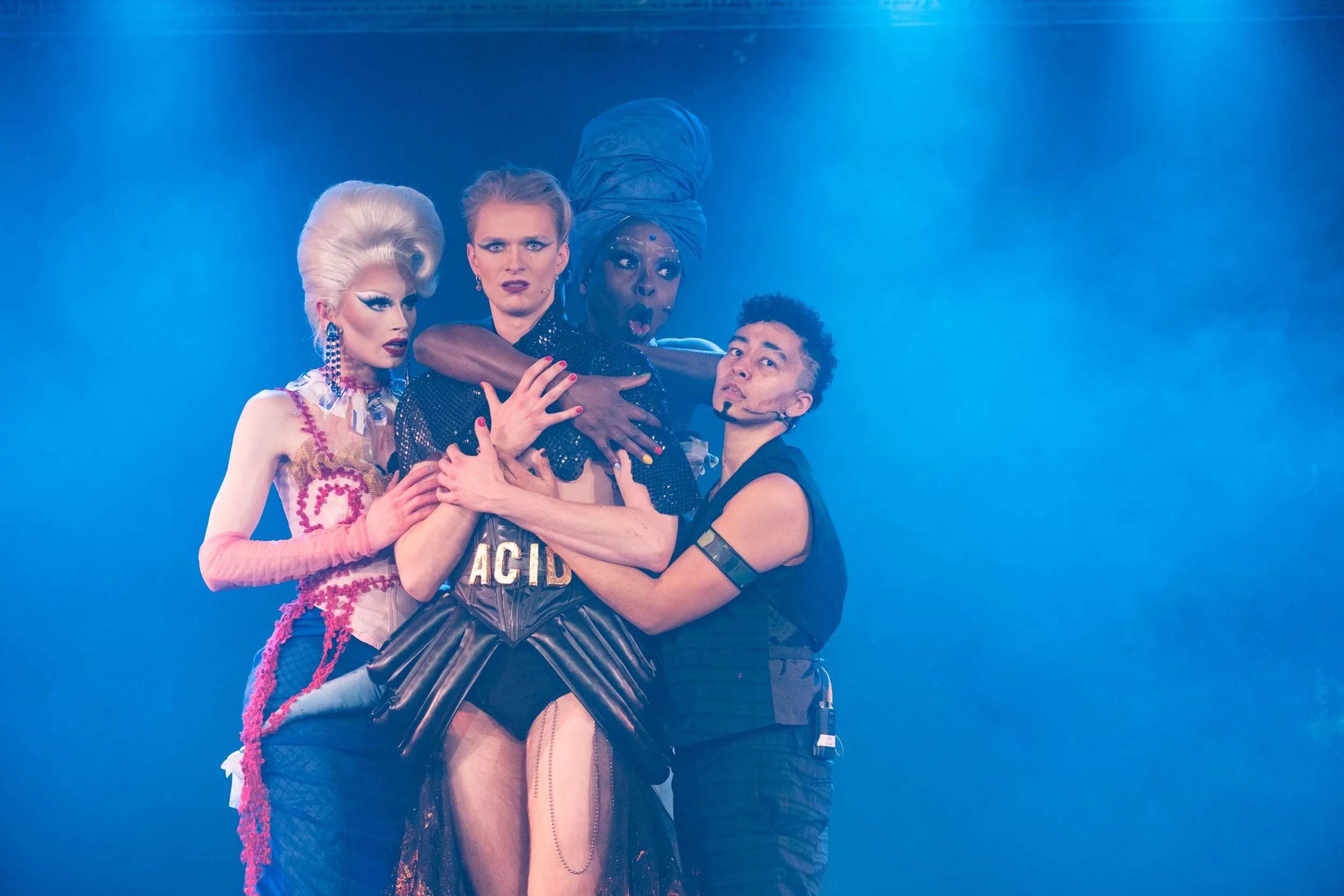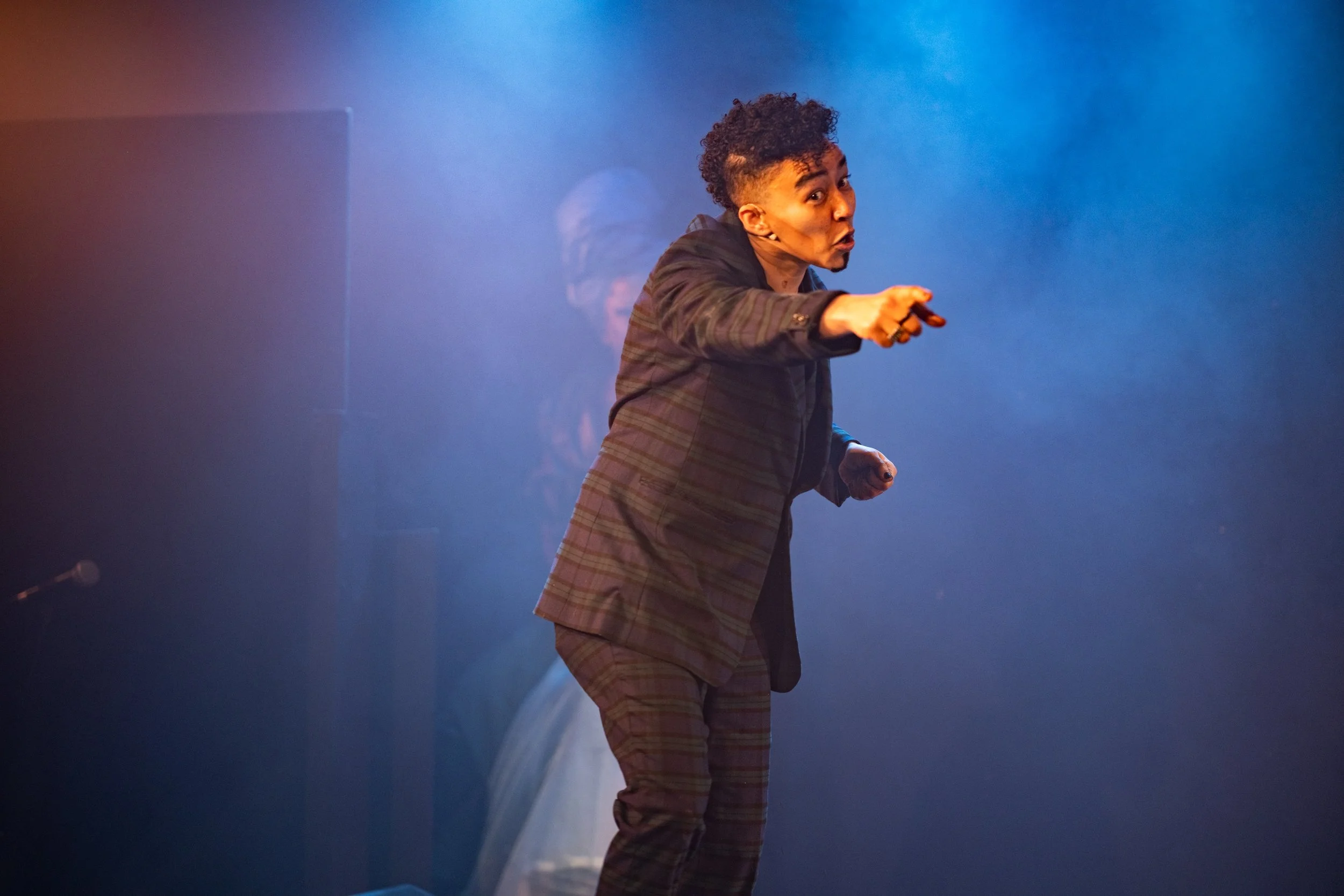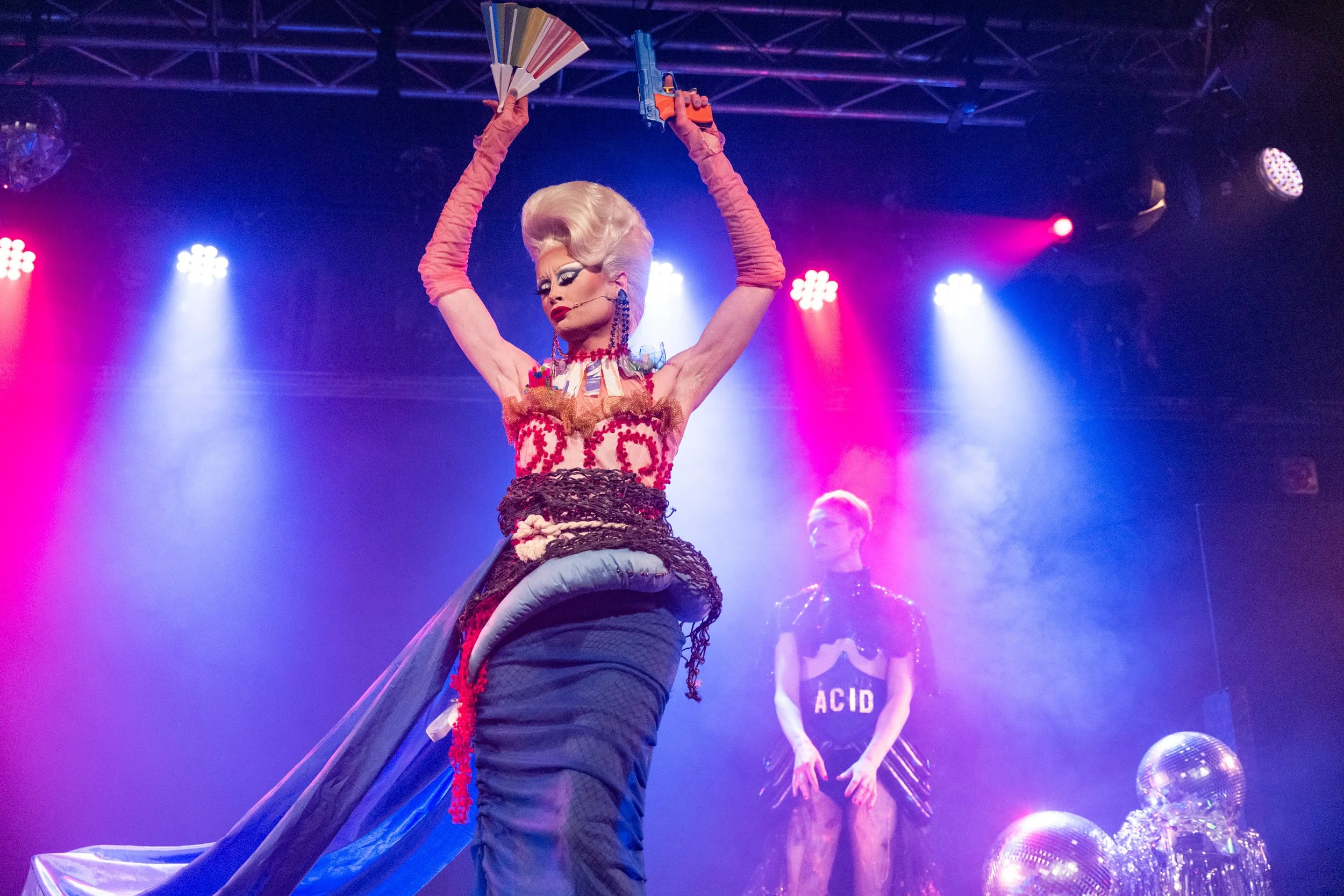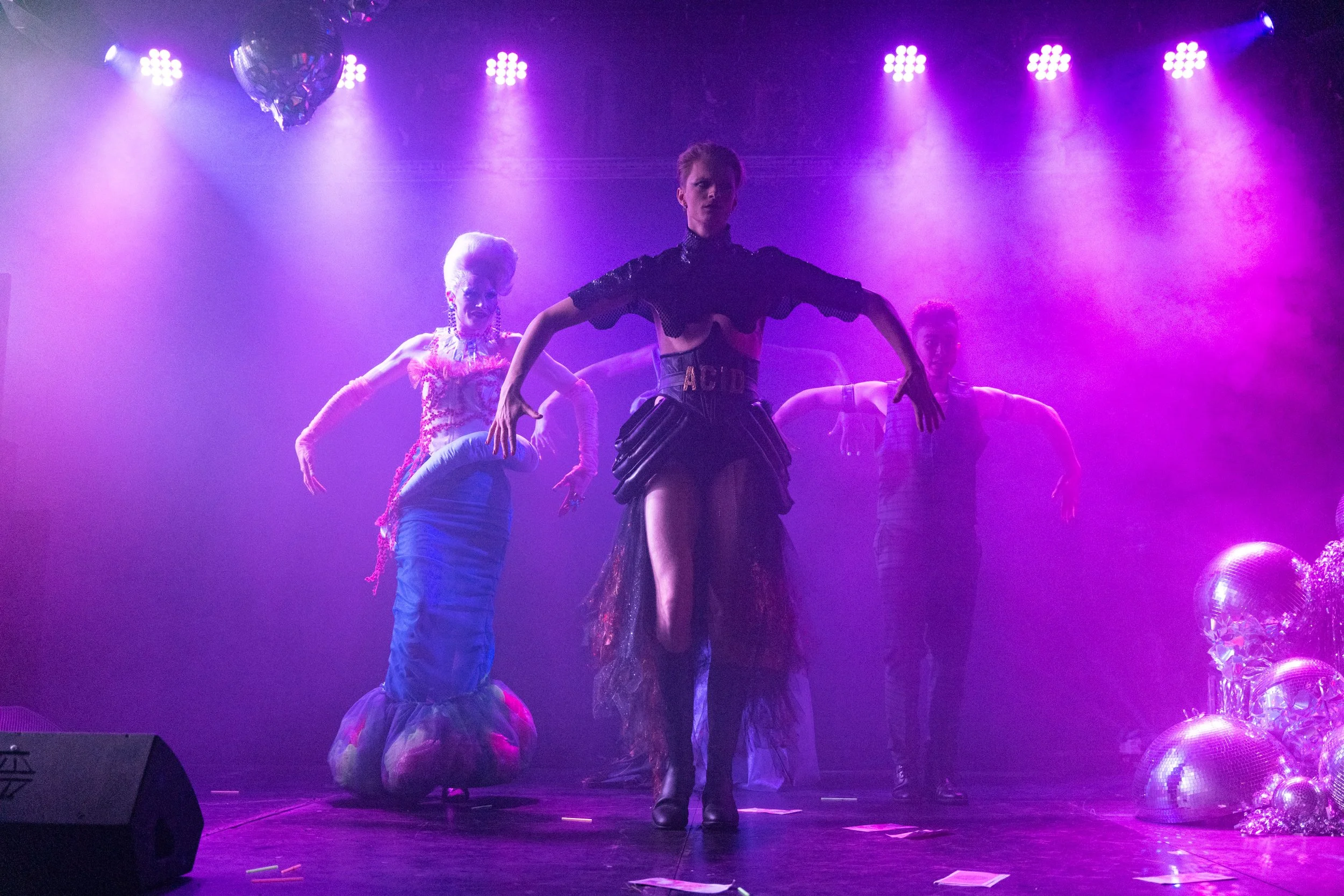“Making the changes needed to tackle our greatest global challenge, will require paying attention to culture as it manifests in our past, our present and how we imagine, and make our future”
Alison Tickell, Founder & CEO of Julie’s Bicycle
OUR SUSTAINABLE JOURNEY
2021-PRESENT

The Covid-19 pandemic was an instrumental moment for us.
We had just closed our production of Time and Tide at Park Theatre in February 2020 when the world changed.
Much of that show ended up in storage, but a large portion was ultimately lost to a skip. For a piece that celebrated local business and the high street, our ambition to source fruit and vegetable props from local markets — reducing food waste — didn’t hold up in practice. We were a small team, taking on our biggest project yet, and we hadn’t learned what has since become our first rule of sustainable work.
Be kind to yourself, and let mistakes guide you to better choices next time.
Our next project set out to put those lessons into practice, and that’s where our journey into sustainable theatre-making really began. Since then we’ve worked with venues and artists to improve sustainable outputs across productions and buildings, leading workshops and sharing practice with organisations including Leicester Curve, Norwich Theatre, Leeds Playhouse, Theatre Deli, and Harrogate Theatre.
What follows sets out what we’ve done since that turning point, what we’ve learned along the way, and how we plan to keep building sustainability into everything we do. Where possible, we log our findings with the Creative Green Tools by Julie’s Bicycle, to measure our carbon output.
2021

Project: Acid’s Reign R&D
Locations: Rehearsals - NDT Broadgate, London; Jacksons Lane, London; Hampstead Theatre, London
Showcase: Hampstead Theatre, London
2021 was the year we started putting sustainability into practice, beginning with small changes that made a big difference, and encouraging participants to take ownership of their impact. For the two-week R&D of Acid’s Reign we focused on travel and waste as two areas we wanted to lower our emissions - we provided small ‘quality of life’ upgrades, to support and encourage participants’ behaviour to lower their own waste.
Travel: The biggest contributor to our emissions would be any business travel generated by participants. As the R&D would be London based, we made sure any venues we hired had good TFL connections, as encouraging our participants to use public transport would be the easiest way to reduce these emissions. We also covered all travel expenses, on the provision any travel taken was using public transport.
Waste: One of the largest and most common contributors to waste in temporary working environments is non-recyclable food and drink items.
A 2018 study by the London School of Economics analysed the contents of 23 bins (12 recycling and 11 general waste, from 4 different university campuses), and reported single use plastic as the most common commodity, most notably in disposable plastic cutlery and disposable coffee cups. It was also reported these items were the most common contaminants, often being discarded in the incorrect bin.
We set up “low-waste rehearsal rooms” by providing bowls, plates, cutlery, whilst ensuring the spaces we used were fitted with microwaves, to encourage people to bring food from home. We supplied ethically sourced coffee, reusable mugs and a low energy kettle, and added our own recycling and waste bins so we could track how much we generated.
A 2023 waste audit undertaken by the Theatre Green Book at the National Theatre Studio, reported only 28% of the contents of the bins analysed were non-recyclable items. Of the remaining items, 13% were reusable coffee cups, and recyclable food packaging. It’s as important to us to not only provide alternatives to reduce the amount of waste in your working spaces, but providing suitable methods of disposal “to hand,” limits the amount of waste that will be incorrectly categorised.
For safeguarding purposes, we kept some budget aside for any necessary taxi costs participants required, encouraging the use of Bolt to maximise the chances of using an electric/hybrid taxi (Bolt was found to operate nearly 20% of it’s London fleet as PHEV (Plug-In Hybrid Electric Vehicle)).
In 2022, TFL reported their average carbon output per passenger, per 1km as the following:
Underground - 40.5gCO2e | Overground - 29.2gCO2e | DLR - 33.3gCO2e.
In 2024, TFL reported Underground as now producing emissions of 24.7gCO2e per passenger, per 1km.
Carbon output:
0.113 tonnes for the entire R&D.
Measuring: Business Travel, Audience Travel (for showcase), Rehearsal waste
2022
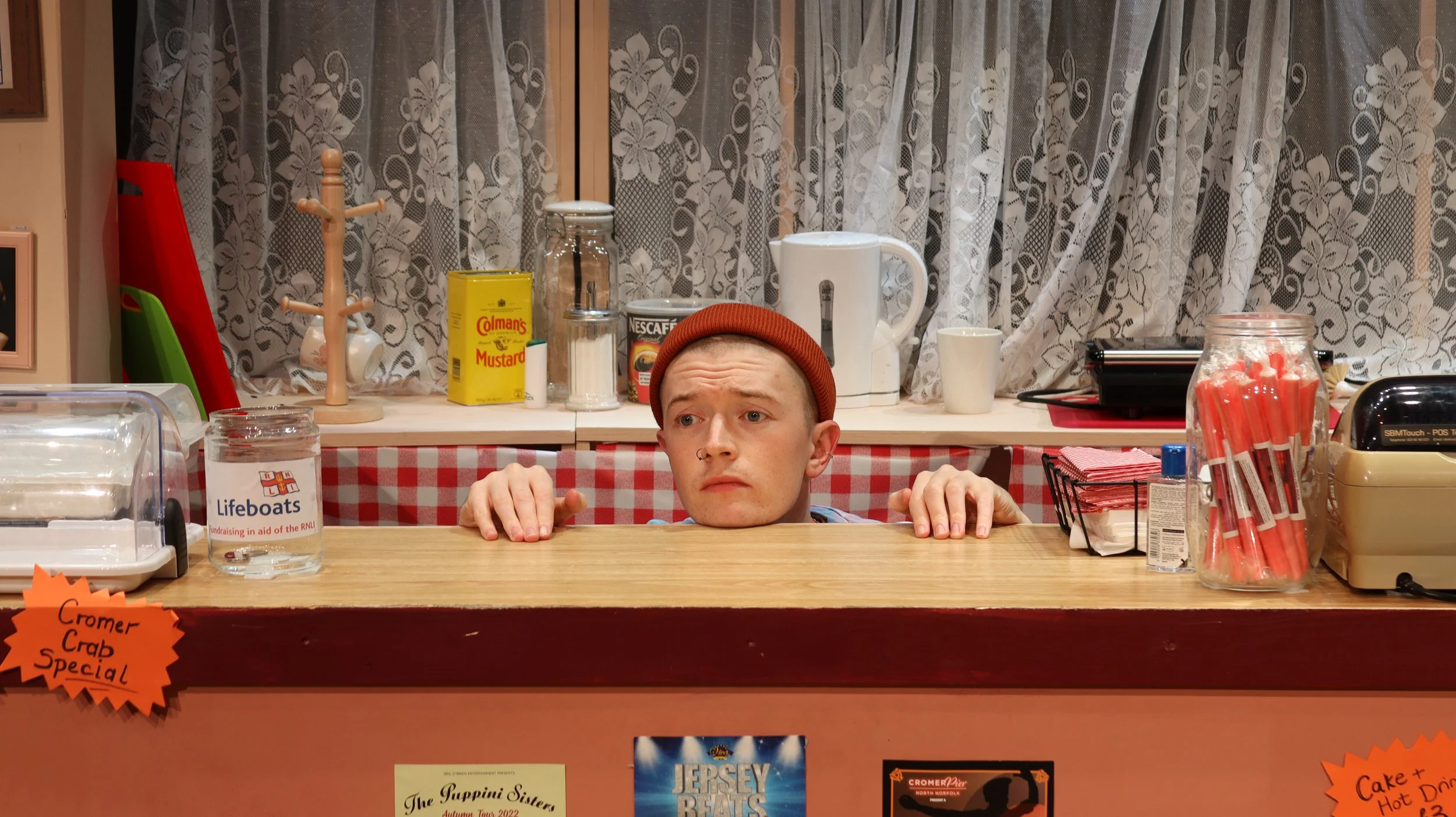
Project: Time and Tide
Rehearsals & Previews: Stage Two, Norwich
Performances: Mercury Theatre, Colchester; Theatre Royal, Bury St Edmunds; Seagull Theatre, Lowestoft; Little Theatre, Sheringham; Wells Maltings; Corn Hall, Diss; St Georges Theatre, Great Yarmouth; Carnegie, Thetford; Fisher Theatre, Bungay; Stage Two, Norwich
“Remounting existing productions, or re-using existing designs, is a powerful way of reducing environmental impact, compared to creating new productions from scratch”
Materials: Julie’s Bicycle notes that materials account for a significant proportion of a theatre production’s footprint — typically 30–50% of total carbon for a production (depending on scale). Their case studies highlight that re-mounting/re-using set elements can reduce material carbon by up to 60–70% compared to new build.
Whilst not originally intended as a touring set, it was beneficial that the set pices for Time and Tide’s original run had been constructed using the same guidance from the Theatre Green Book toolkit for Reuse and Recycling - specifically their modular aspects. This allowed designer Caitlin Abbott to repurpose the original pieces she had designed, and allow them to work in a new design, that could fit multiple venues and configurations.
We also benefitted from the fact that Time and Tide was set in an indoor space, and therefore had aspects to the design that had made sense to go into storage in the first place - such as flats, doors and a window.
As the production had a generic setting (a cafe), this also allowed our co-producer to support us with lending simple items we hadn’t stored from the set - specifically two cafe tables.
Travel and Accomodation: Benefit of acquiring city centre accommodation meant distance from company base to rehearsal venue was walkable. We sourced and paid all touring accommodation, provided cast and crew shared space. All other travel expenses paid for (home to company base) provided it was using public transport.
Waste: WRAP reported in 2022 that a single person generated 88kg of food waste per year, and a household generated 210kg. It has been regularly reported since 2010 by Julie’s Bicycle that touring exacerbates regular living models and conditions. By ensuring participants had a constant base for the six weeks engagement, we gave ourselves the best chance of lowering these emissions.
In 2022 we took these ideas on the road, applying them to a full production and tour co-produced with Norwich Theatres. We piloted a “bicycle wheel” model: one central base with daily trips to nearby venues. The model was developed with the Sustainable Touring Consortium, under Accelerator - a strand of the Arts Council’s Environmental Programme. It eased pressure on the team, cut travel strain, and supported more sustainable deals.
Touring model: 11 venues in 3 weeks, with larger venue partners underwriting smaller ones. Cast and crew stayed in one base for the full run.
Venues: We provided Green Riders alongside Technical Riders for the first time - we used the 2018 template from Julie’s Bicycle to help develop our own model. Due to the disparity in venue size, staffing and resources, we worked to establish the tone of the rider and ensure it could be one size, and encouraging.
Mostly we wanted responses to the rider to provide us with information e.g. many venues didn’t provide recycling bags, therefore we brought our own.
On this occasion we didn’t collect any venue energy data, due to the small team already having full schedules for the days they worked, and many of the smaller venues being unable to provide these figures. We used the generic data from the JB Carbon Calculator to calculate this data per venue.
We also were unable to collect any audience travel data, due to the venue disparity, which would have produced skewed figures.
Waste: The 2023 bin audit from TGB listed 25% of contaminated waste as food waste. In addition to the bins we purchased in 2021, we borrowed a food waste caddy from Norwich Theatre to allow us to dispose of not only our participants' food waste, but any food waste generated during the performance. A benefit of the model giving us a company base, meant it was easy to use kerb side recycling for all the material waste generated.
Sponsorship: We partnered with Gridserve to supply one Plug-In Electric Vehicle for company use to transport cast to touring venues. All EV charging was free provided we plug in at Gridserve locations. One of the items the tour was based on was leasing an Plug-In EHGV - sadly this fell through, and we had no option but to lease a diesel van for 2 weeks. This put a large dent in our carbon output, and provided the most substantial addition to our emissions.
CARBON OUTPUT:
0.33 tonnes per performance
Measuring: Business Travel, Materials, Rehearsal and Production Waste, Accommodation, Venue Energy (approx)
2023
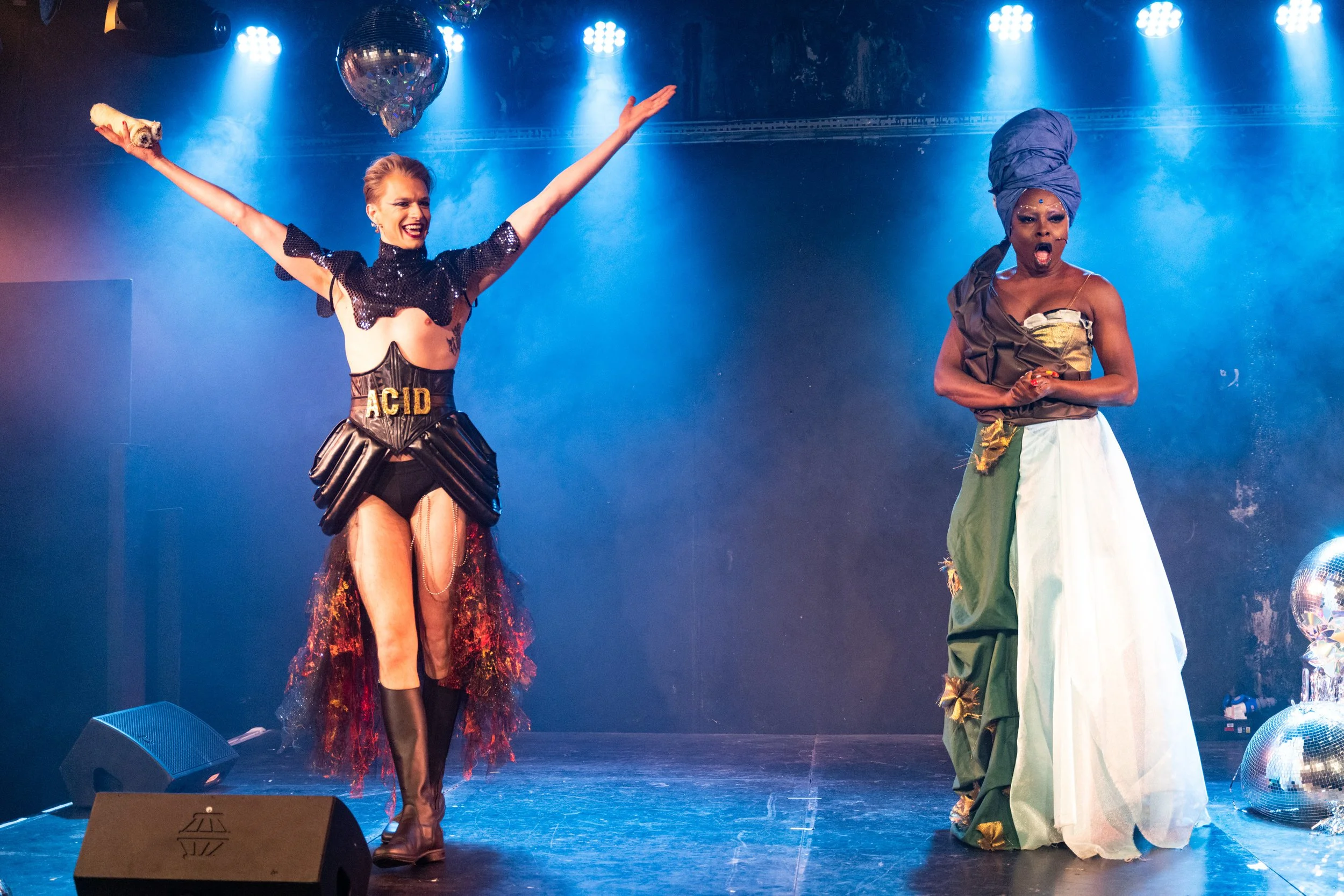
Project: Acid’s Reign
Rehearsals: Theatre Deli, London
Performances: VAULT Festival, London
March 2023 saw Acid’s Reign premiere at VAULT Festival, following rehearsals at Theatre Deli, London. This was our first fully new production as a sustainable company, with nearly all production items built from recycled, reused or upcycled materials - specifically four drag/cabaret costumes.
Continuing practice: All previous practice we had undertaken on our 2021 travel and waste procedures (including paying travel expenses provided public transport usage), were in effect here, and recorded.
Props/Set: With around 90% of a plastic item’s carbon emissions in its life cycle coming from the production stage, as opposed to the disposal stage, we wanted to ensure any props we could not build ourselves came from a previous home. All bar one of the many props on the show were sourced from Ebay, Freecycle or Facebook Marketplace.
A significant lesson we learnt on this process was the lead-in times for props became a much larger conversation with the Writer and Director. As we were still workshopping elements of the script and production into rehearsals, requests for props had to be within a suitable period of time. Sourcing and acquiring second hand props requires nearly two weeks, including delivery, as opposed to using next day delivery companies.
All set items were made out of reclaimed items and materials, such as melting glitter balls, sourced using the same methods as our props sourcing. Only two MDF 8x4 flats were utilised, which we custom built ourselves (and still have in storage, following the guidance from Theatre Green Book Production Toolkit).
Data capture: We did not capture any audience or venue data due to the festival setting - these would have been very difficult to quantify.
Carbon output:
0.115 tonnes per performance
Measuring: Materials, Rehearsal and Production Waste, Business Travel, Transport, Storage
“Sustainability should be embedded in the design process from the start, fostering collaboration among makers, suppliers, directors, and designers”
Costume: Whilst reusing and repurposing costumes is a continuing practice in the theatre industry, it was important to this production that the costumes were purpose built - this not only maximised the message onstage, but physically showed what was possible with reclaimed materials. The textile industry is the fifth biggest polluter on the planet, with more than 1.2billion tonnes of carbon generated each year according to a 2023 report by the MDPI.
To support this endeavour we became members of Work and Play Scrap Store, who collect and home recycled fabric and other production materials (including paint). As members we had unlimited access to this store. Further clothing items were sourced charity shops, or using online second hand stores such as Vinted. All costumes and corsets were handmade by Charlotte Murray - to support set and costume construction, we hired workshop space near to the rehearsal venue to allow for easy costume fittings, and quick communication between the director and designers.
As the majority of the cast were professional drag performers, we utilised their own personal wigs, shoes and make-up.
Technical: The theatre industry already has a continuing practice of hiring sound and lighting equipment for productions, largely because this is a more cost effective option for most companies, especially those without their own buildings. This practice also has strong sustainable connotations, in all sectors: the European Rental Agency claims renting equipment lowers carbon emissions by 30-50%, due to hired equipment having higher standards of maintenance and longevity. This figure is also supported by collectives such as the RVT Group.
To our detriment on this production, we learnt a lesson by not following this advice, and initially purchasing our own radio microphones for use. We believed that, by making these a company asset, it was a good way of building in more sustainable infrastructure for the future. When said radio microphones didn’t work to the standard we had hoped for, not only was this a waste of our spend, but of our emissions too. We proceeded to hire the in-house equipment provided by VAULT Festival which worked perfectly.
Transport and Storage: Given the sourcing requirements for this project, there were greater transport costs by way of collecting materials. EV Delivery was not a guarantee hence we utilised Zipcar, specifically only for their electric fleet where possible. We did not extend this to our Zipcar petrol van hire, which we used only for load-in/load-out. Given the festival access, we did not take the risk on ensuring an electric van was properly charged, as Zipcar can be unreliable in this area.
2024
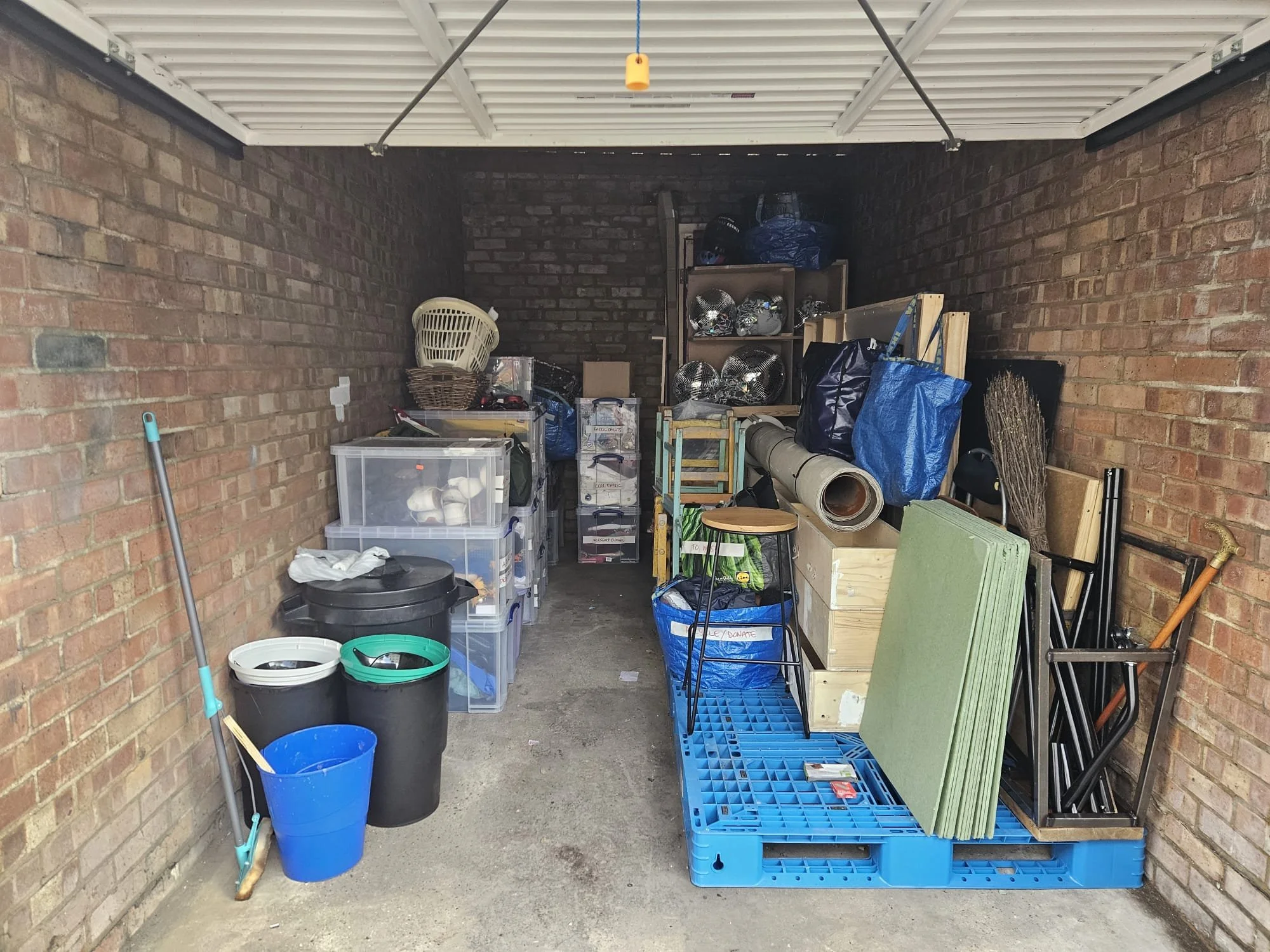
Cleaning House (the fallow year)
With no productions in 2024, we turned inward to cut our ongoing business emissions and prepare for growth.
Consolidated storage units, lowering energy use and emissions.
Reconciled stock to ensure efficient use of resources.
Invested in repurposed plastic pallets and boxes, improving storage and extending the life of production items.
2025

THE REGENERATION SEASON

THREE SHOWS, THREE MONTHS

